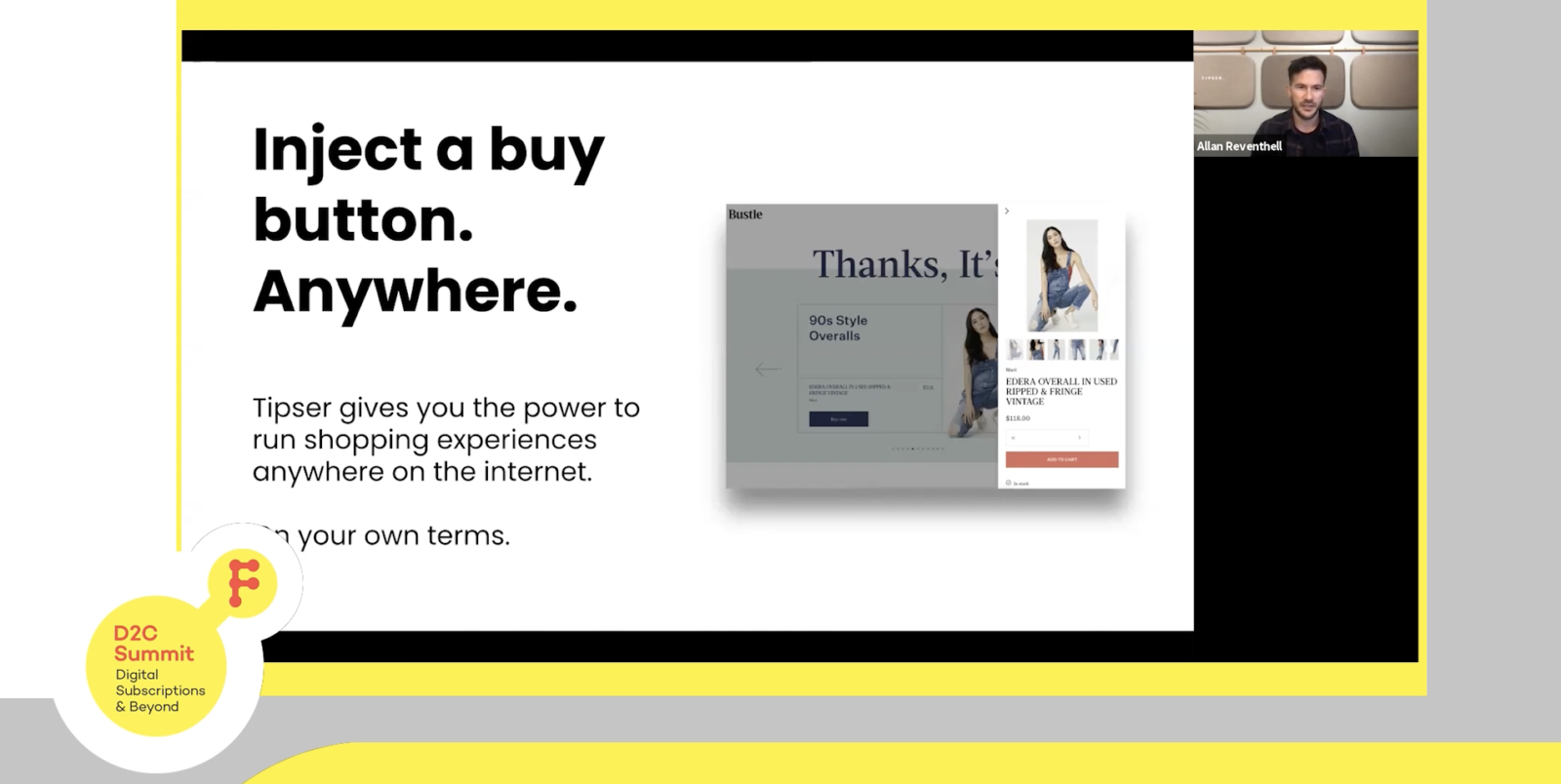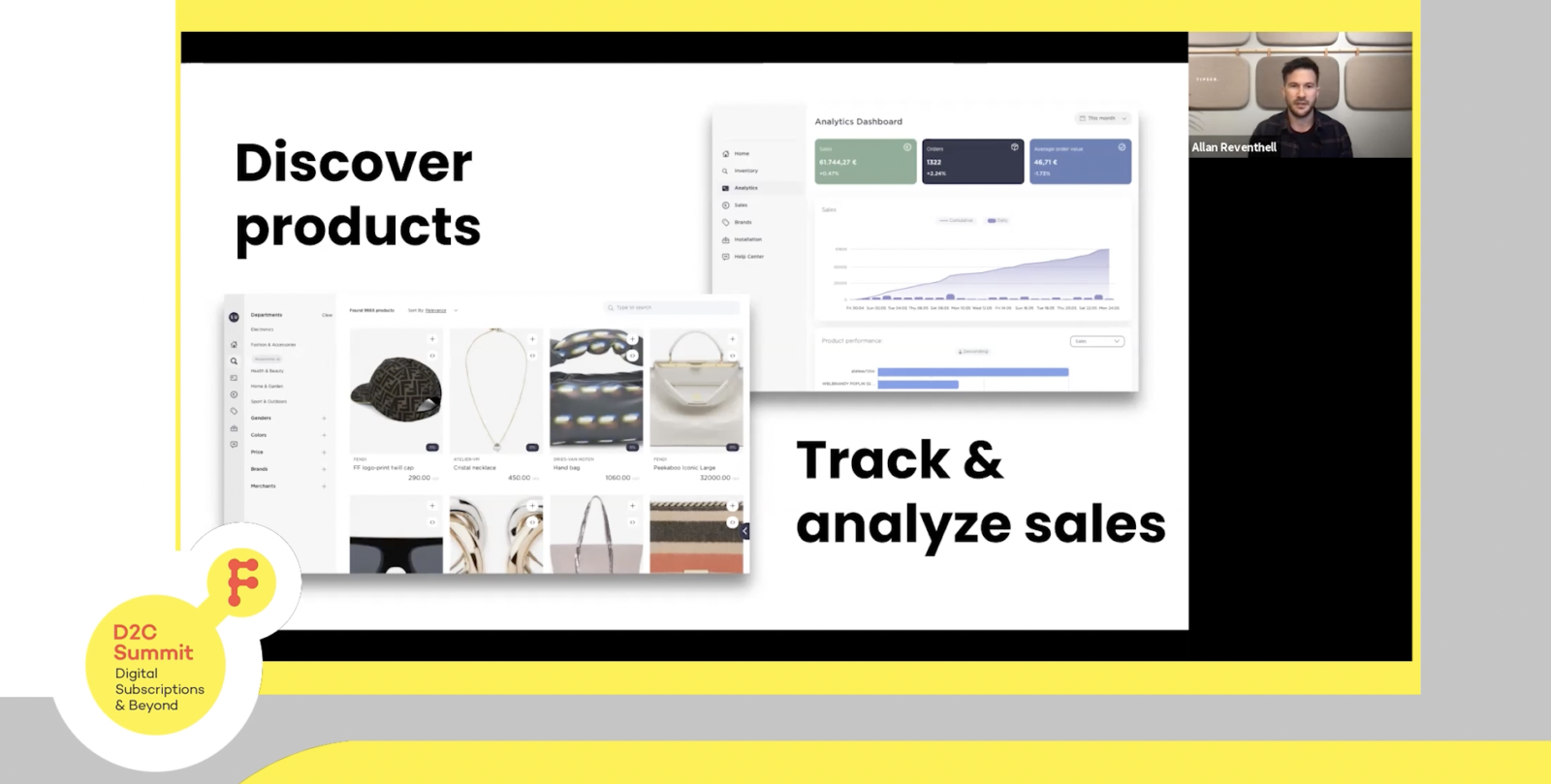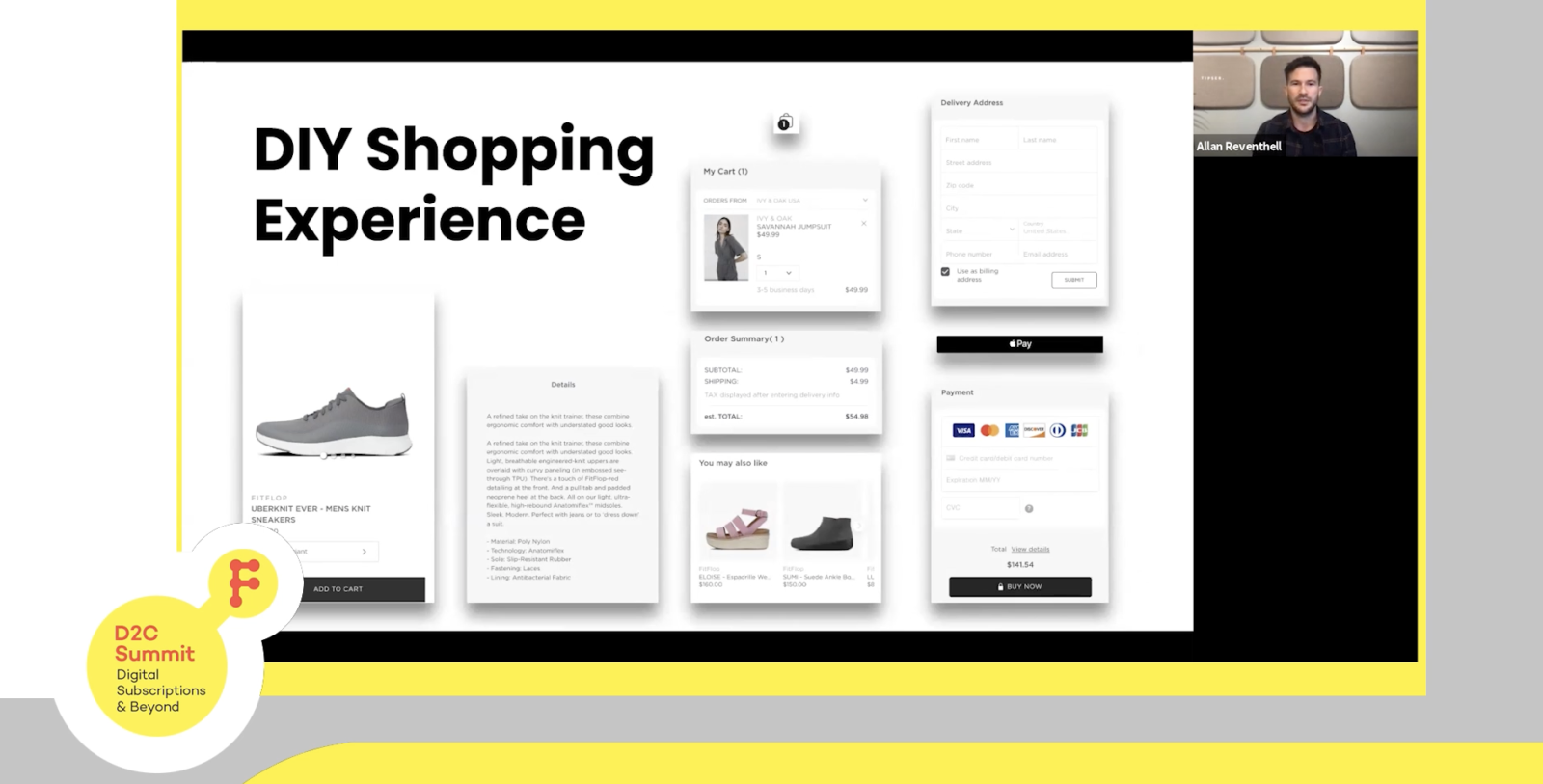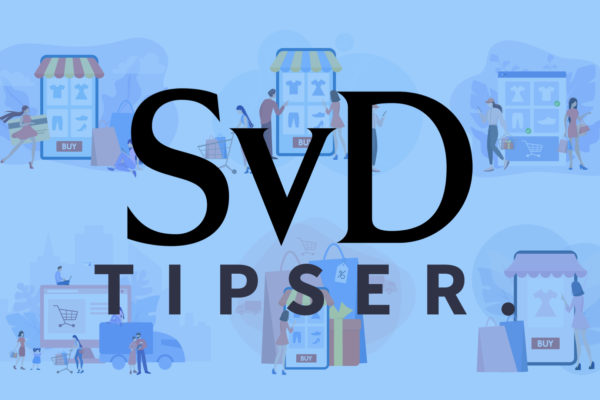How Tipser has enabled Svenska Dagbladet to take tangible steps into e-commerce
When Svenska Dagbladet found its revenues impacted by the onset of the Covid-19 pandemic, the Swedish newspaper began looking for alternative revenue streams. With a weekly reach of 1.6m readers and a legacy media brand dating back to 1884, the company is well placed to promote trust in the products that it offers to its audience. Here, in this interview from the newly launched FIPP D2C Summit last month, Johanna Molander, Business Manager for New Business, talks us through the publication’s e-commerce play, and is joined by Allan Reventhell of Tipser – the company that provides Svenska Dagbladet’s e-commerce platform.
Svenska Dagbladet’s e-commerce aspirations began as early as 2009, Molander tells us. At that time the news, business, culture and opinion paper created a new business area called SvD accent, which was designed to capitalise upon the existing success of the brand and open up new revenue streams. Inclusive within this, preliminary trials in the area of e-commerce were undertaken…
“Only a year after launching this new initiative in 2009, we did an early e-commerce trial with what you might call more retail type products,” says Molander. “But we soon found out that revenues did not match the resources used in terms of management and administration. So we had to quit, and I guess looking back it was because of the fact that the market wasn’t really mature at the time and also that our target group wasn’t there just yet. Instead, we focussed on unique offers within the areas I mentioned before. We did that within SvD and we did it successfully.”
“So why then have we restarted this e-commerce project again in 2021? Well, we are still looking for new revenue streams, that’s an on-going work, and we do see this boost in e-commerce in general. We know as well that this is a wider trend amongst publishers to start their own e-commerce. Not least within Schibsted, where our sister companies within Norway and Sweden are already successfully doing this.”
“So all of these things in combination with Covid made it a good point to start this project again, because as you will understand we had a big loss of revenues last year, and still this year, due to cancelled travel and events. So now was a big opportunity to start.”

The move represents a clear example of the impact that Covid-19 has had on the traditional publishing sector. Here was a revenue stream that had longsince been acknowledged by the media owner as a potentially lucrative addition, and the necessity of the pandemic has accelerated innovation in this area.
For Dagbladet, using Tipser meant that this strategy could not only be implemented quickly, but also importantly into the publisher’s own branded website.
“Tipser is basically an e-commerce toolkit, if you like,” says Molander. “It’s a platform, but it’s also customer support, inventory management, and order handling – basically everything you need around e-commerce. We work on the basis of a share of the sales generated through our shop. And a big advantage is that our shop is within the Svenska Dagbladet environment, so the customers can browse the product still having the impression that they are staying with us and not on any external site. The purchase is also made in our environment.”
So with the technical side covered, what then are some of the key considerations that Molander sees for the publication when it comes to selecting the right all-round ecommerce strategy?
“When it comes to choosing products, the starting point is our knowledge about our customers. We know a lot about their areas of interest and we have a lot of data on them. But then it is also important to keep a good brand match. Our customers have high expectations of us, and expect high quality, and they trust us – that should also be true of our shop.”
“Nevertheless, we also need to offer a good deal – a discount or a good price, because we can’t compete on fast deliveries or range. But we are really very early on so will keep trying different products and price ranges, and I’m sure will learn a lot on the way.”

What Tipser essentially offers is a massive inventory of products, that the company makes available to media owners to put on their own sites for sale. A buy button is injected into the desired pages, and this allows the publisher to run shopping experiences anywhere they see fit and on their own terms.
For Allan Reventhell, Product Manager for Tipser, the platform’s success has been built on its ability to strike the right balance between easy implementation and highly customisable shopfronts:
“You could say that the main challenge that I have in my day-to-day work is to find the optimal balance between creating a really quick and convenient solution that works out of the box for everyone, but also to make it as flexible and customisable as possible. That is what gives it that blended impression and makes the experience feel native to the audience. They feel that they’re transacting with you as a publisher and not with a third party.”
“It’s not only about establishing your storefront, it’s also about being able to work with this operationally. So with Tipser Portal, you are able to navigate and search through our entire inventory of products, which you can put out there for your own audience to browse through and purchase. This is complimented with rich analytics tools that allow you to track and analyse your sales and maximise your implementation when it comes to your own business.”
In the case of Svenska Dagbladet, the whole thing is implemented with maximum simplicity, by way of embedding a topline JavaScript snippet into website pages, followed by sub-snippets for the individual e-commerce modules that sit on them. While Tipser works hard to make the tech side of the implementation as seamless as possible, it is as Reventhell reiterates, the ability to begin to build a business around e-commerce that requires real skill from those on the publisher’s side.

“The tricky thing is that it’s about building a business around e-commerce and doing that in the longterm. That’s the challenge that everyone has in terms of working with e-commerce and living the retailer life, if you will.”
From there, technical implementation can become more sophisticated, syphoning off and customising different modules to create different embedded product cards for example. Customer support is also provided on a 24hr basis across timezones.
For Molander, taking a sensible, simplistic approach towards e-commerce is what has allowed Dagbladet to take its first steps into the offering, while minimising risk: “For us, the easy way to do e-commerce was to not have to build an internal organisation, or handle customer service. So we can do it in a low scale way.”








